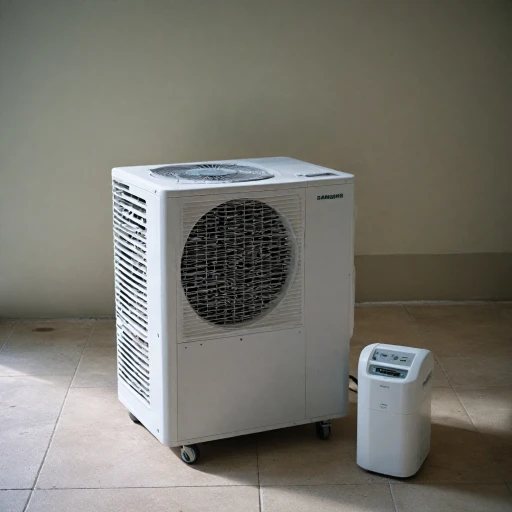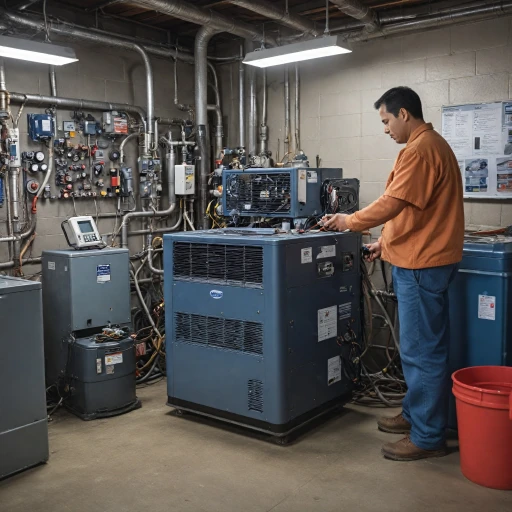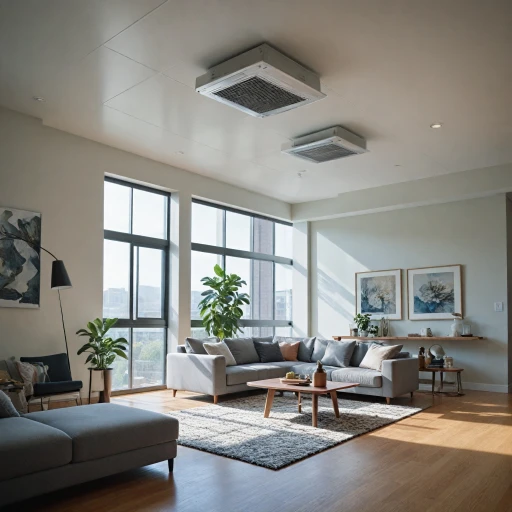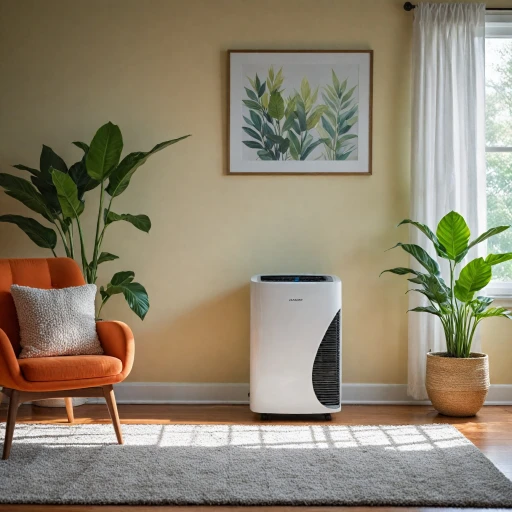
Understanding Power Requirements
Evaluating the Electrical Specifications
When selecting a portable air conditioner, it's crucial to understand the power requirements of the unit to ensure efficient operation and prevent electrical hazards. This includes considering the BTU rating, which indicates the cooling capacity and directly impacts the electrical power demand of your air conditioning unit. Higher BTU units, often necessary for larger rooms, typically consume more energy.To determine the ideal BTU level, consider the room's size and how much cooling it requires. Portable air conditioners commonly range from 8,000 to 14,000 BTUs. These ratings not only indicate cooling capacity but also affect the type of outlet you’ll need. It’s critical to match the unit with an appropriate outlet to prevent overheating and ensure safety.
Plug and Outlet Matching
Knowing the specifications of your portable air conditioner's plug type is vital. Units with higher BTUs may require outlets with specific NEMA configurations to handle increased power loads. It’s common to find units with a plug type suitable for standard 115-volt or more robust 230-volt outlets. Matching the correct outlet with your unit’s plug is essential.Additionally, avoid using extension cords, especially those not rated as heavy duty, as they pose a risk of overheating and can compromise the air conditioner's performance. This could lead to a decrease in the unit’s efficiency or, worse, electrical fires. If your setup requires an extended reach, prioritize heavy-duty extension cords that can handle the air conditioner's power requirements safely.
Understanding the intricate details of power requirements and plug compatibility is pivotal for efficient portable air conditioner usage. For more insights, consider reading about the importance of duct flex in portable air conditioners to optimize your unit's efficiency.
Types of Outlets Suitable for Portable Air Conditioners
Selecting the Right Outlet for Your Portable Air Conditioner
When choosing an outlet for your portable air conditioner, it's essential to know which outlets are suitable for its power requirements. Typically, portable units have specific plug types and require particular outlets. Depending on the model and BTU rating, you'll find the following options:- Standard 120V Outlet: Most portable air conditioners under 12,000 BTUs use a regular 120V plug. These are commonly found in residential homes and are compatible with many portable units.
- Heavy Duty 240V Outlet: Some larger capacity units, often used in commercial settings or large rooms, might require a 240V outlet. This ensures the air conditioner can efficiently deliver its maximum cooling capacity.
- NEMA Outlets: For high-efficiency units, especially those incorporating heat pump technology or variable speed control, a NEMA rated outlet might be necessary. These outlets provide additional power for units requiring greater cooling capabilities.
Safety Considerations for Air Conditioner Outlets
Building a Safe Foundation for Your Portable Air Conditioner
Ensuring the safety of your portable air conditioning unit goes beyond just its cooling capacity and reviews. Choosing the right power outlet plays a crucial role in both performance and maintaining safety standards. Consider Appropriate Plug Type and Outlet Compatibility Portable air conditioners vary in their plug and outlet requirements. Generally, a 115V outlet suffices for most units, but high-capacity models, like those that reach up to 14,000 BTU, might require a 230V outlet. Make sure to check the plug type and ensure it fits the corresponding outlet in your room. An outlet adapter may be needed if your unit has a non-standard plug. Beware of Overloading Electrical Circuits It is crucial not to overload your circuit. Portable air conditioners can consume a significant amount of power and often require their own dedicated circuit to function safely. Avoid using extension cords, especially not thin gauge ones, as they can overheat and become a fire hazard. If absolutely necessary, opt for heavy-duty extension cords tailored for high-amp air conditioners. Protect from Moisture and Water Air Interactions Portable units, particularly those with a heat pump function or mounted air systems, can produce condensate. Ensure the outlet is placed away from any potential water exposure to mitigate electrical risks. For units with window installation kits, secure window frames to prevent water intrusion. Errors in electrical handling and improper outlet planning can significantly hamper your air conditioner's performance. By aligning your setup with these safety considerations, you can maintain optimal cooling and avoid dangerous mishaps. For more tips on maximizing efficiency and ensuring your portable air conditioner’s longevity, follow reputable guides and product reviews.Installation Tips for Optimal Performance
Installation Techniques for Efficiency
When setting up your portable air conditioner, proper installation is crucial to ensure efficient cooling and power usage. Begin by finding an appropriate outlet that matches the unit's power requirements, including considerations for the btu output and plug type. It’s essential to use a dedicated outlet, typically NEMA configurations in most devices, to handle the power demand safely.
Ensuring a snug fit of the window air kit is important for limiting heat exchange, which can degrade your air conditioner's performance. The window air kit should be properly mounted to avoid any unnecessary leaks of indoor air, which can reduce cooling efficiency. This includes securely attaching the hose and ensuring the seal is airtight.
When selecting an outlet, avoid using extension cords, unless they are specifically rated for heavy-duty applications and can handle the amp and cooling capacity of the unit. Opting for the wrong extender can lead to inefficient power usage, overheating, or even potential fire risks. Always check the device’s reviews and manuals for the recommended power setup, avoiding adapters that may not match the conditioner’s requirements.
Lastly, consider placing the unit in a location that optimizes airflow, away from direct sunlight or obstructions. A proper installation not only optimizes performance but also extends the lifespan of your portable air conditioner.
Common Mistakes to Avoid
Avoiding Common Pitfalls
When installing a portable air conditioner, attention to detail can make all the difference in ensuring efficient cooling and performance. Avoiding common mistakes not only enhances the lifespan of the unit but also ensures your room is kept at the desired temperature with the least amount of effort. Here are some pitfalls to watch out for:
- Inappropriate Outlet Selection: Always double-check that your power outlet matches the amp requirements of your portable air conditioner. Using the wrong outlet or an outlet adapter can lead to overheating, reducing the efficiency of your air unit. Refer to the specifications provided in product reviews to ensure compatibility.
- Improper Window Kit Installation: A poorly installed window kit can lead to air leaks, causing your conditioner to work overtime. Ensure that the kit is aligned correctly with the window frame and that the hose is securely attached.
- Neglecting to Consider Cooling Capacity: Portable air conditioners come in different BTU (British Thermal Unit) ratings, affecting how much space they can efficiently cool. Ensure the cooling capacity of your unit matches the size of your room.
- Using Extension Cords inappropriately: It's crucial to avoid using a standard extension cord, which might not support the power draw of the air conditioner. Instead, opt for a heavy-duty NEMA rated plug if longer reach is necessary.
- Forgetting to Drain Water: Certain portable air conditioners, especially those with a heat pump feature, may collect water during operation. Failure to drain this water can lead to decreased cooling or even water spillage.
- Ignoring Indoor Air Quality: Make sure that filters are regularly cleaned or replaced to maintain good indoor air quality and optimal performance of the unit.
By avoiding these common mistakes, you can maximize your portable air conditioner's lifespan and efficiency, ultimately keeping your home environment comfortable and cool.
Troubleshooting Outlet Issues
Troubleshoot Common Outlet Issues
When dealing with portable air conditioners, encountering outlet issues can be frustrating. However, a few simple steps can help diagnose and resolve these problems effectively. Here's a guide to help you troubleshoot common outlet issues related to your cooling unit.- Check Power Supply: Ensure that your portable air conditioner is plugged into a working outlet. Test the outlet with another device to confirm it's delivering power. An extension cord, especially if it is not heavy duty, can affect performance, so ensure you're using the correct one.
- Verify Plug and Outlet Compatibility: Different air conditioners require specific plug types. If the plug and outlet don't match, consider using an appropriate outlet adapter. But be cautious; incorrect adapters can strain your electrical system.
- Inspect the Circuit Breaker: Should your portable AC unit not turn on, check the circuit breaker box. Overloaded circuits can trip breakers, particularly if sharing the line with high-power appliances.
- Assess Voltage Requirements: Portable air conditioners, particularly those with high BTU ratings, may require specific voltage levels. Ensure your outlet can accommodate the unit's power needs, and in cases where the correct outlet isn't available, a professional electrician might be needed.
- Look Out for Wiring Issues: If an outlet frequently powers off or if the plug feels hot to the touch, there may be underlying wiring issues. Seek assistance from a qualified technician to inspect the wiring for potential hazards.
- Consider Outlet Positioning: For optimal performance, make sure the unit is close enough to the outlet. This avoids strain on power cords, especially in window installations with an install kit limiting the AC position possibilities.












